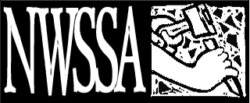Delve into the vibrant world of stone sculpture and the dedicated community that shapes it. Explore a rich array of subcategories, including insights into the essence of Sculpture NW, perspectives from the editors, artist spotlights, and engaging conversations. Whether you’re a seasoned sculptor or a novice exploring the Beginner’s Corner, this space is a treasure trove of knowledge. Northwest Stone Sculpture Association is not just a platform; it’s a community, a conversation, and an exploration of the fascinating world of stone carving.
There are few sculptors who have not had the unhappy experience of breaking a carbide chisel. One’s immediate thought is to go wailing back to the dealer: “It broke! There’s […]
To guide sculptors who would wish to have work executed in China, here is an outline of a current project, the problems with local production, the Chinese option and the […]
My first “power tool” for sculpting was an angle grinder fitted up with a masonry grinding disc. It seemed an amazing step from the serenity of hand tools to the […]
Hand tools, yeah! One arm swings the hammer; the other braces the point or claw. This drum beat sends us on a journey into the stone. It’s primitive, direct, a […]
A workhorse in any stone studio, the standard 4 to 5 inch angle grinder spins up around 10,000 rpm. This is pretty much designed speed for metal and masonry cutoff […]
by Boris Spivak Every artist dreams of a fine studio where the working process will be effective and pleasant. The studio is the sculptor’s work place and, as any contemporary […]
If you are entering art competitions with your sculptures, and need to ship them to the exhibit or to customers, you need a sturdy, reusable crate. These foam lined crates […]
Your lifestyle requires money! Achieve itll And account for it!! Generally, the artist in business alone is operating under a Sole Proprietorship (one individual or a married couple). This is […]
ART AND SCULPTURE Thoughts on how drawing can help us sculpt. Taken from my notes on a 2008 lecture by Bob Leverich with some input from others. By Bill Weissinger […]
Geologist Micheal E. Yeaman presents an introduction to the series he has created regarding the science and geology of stones used in the art of sculpture to the Northwest Stone […]
This morning I followed up to what I saw Lee Gass doing. He was “sanding” with a piece of a bench grinder wheel. I have a few spares so I smashed […]
by Boris Spivak Every artist dreams of a fine studio where the working process will be effective and pleasant. The studio is the sculptor’s work place and, as any contemporary […]

We need some kind of descriptive text here.